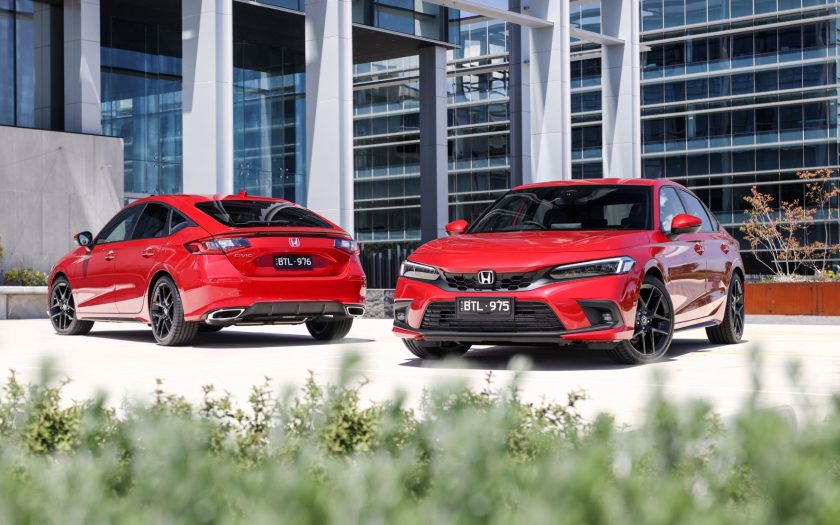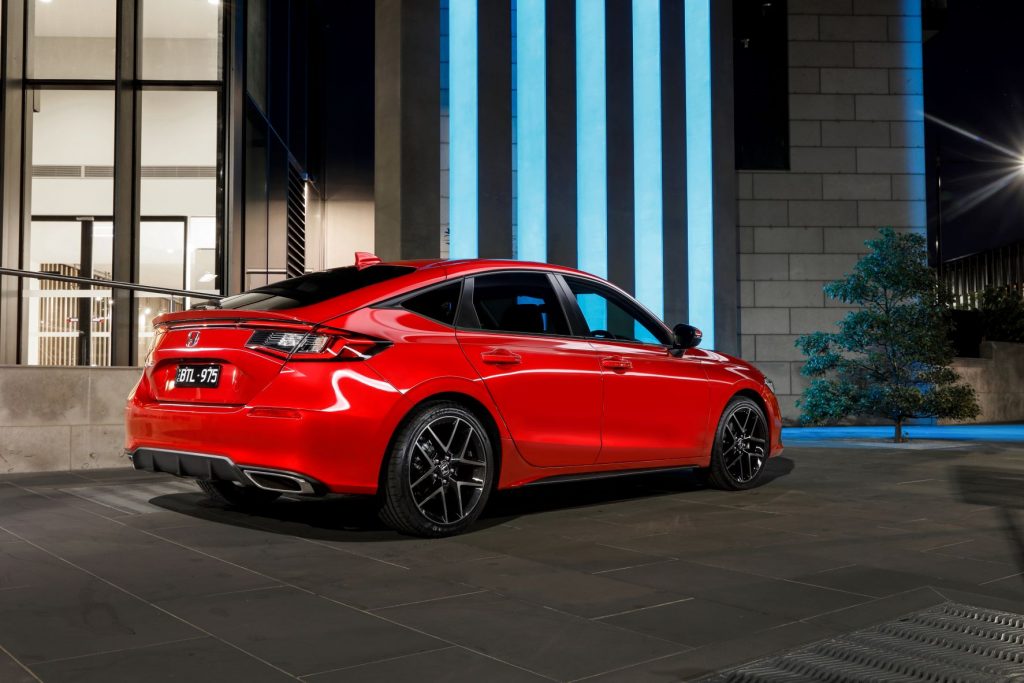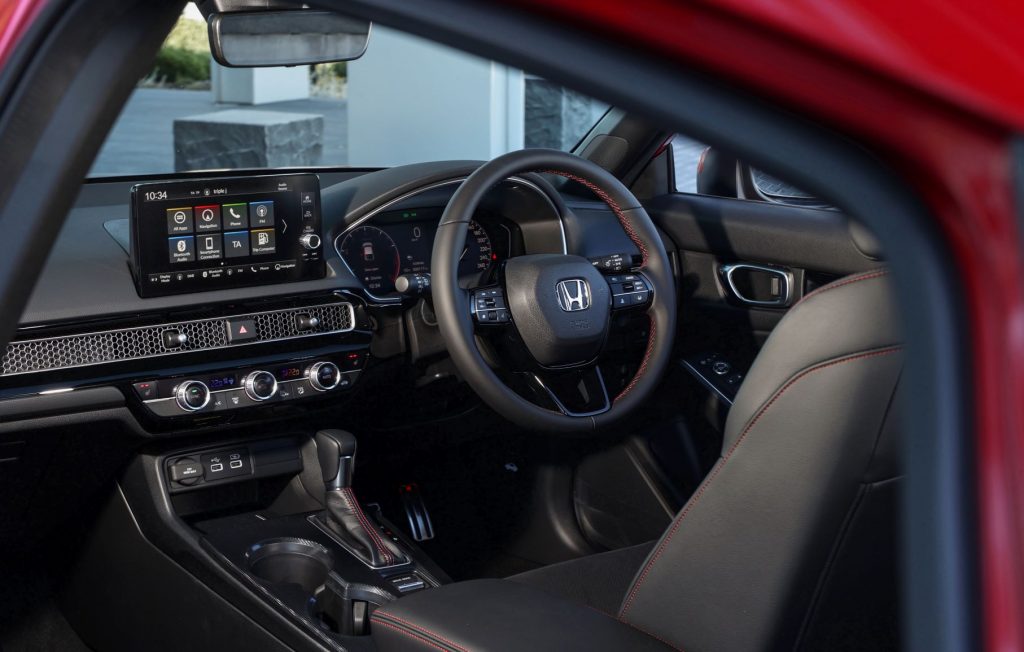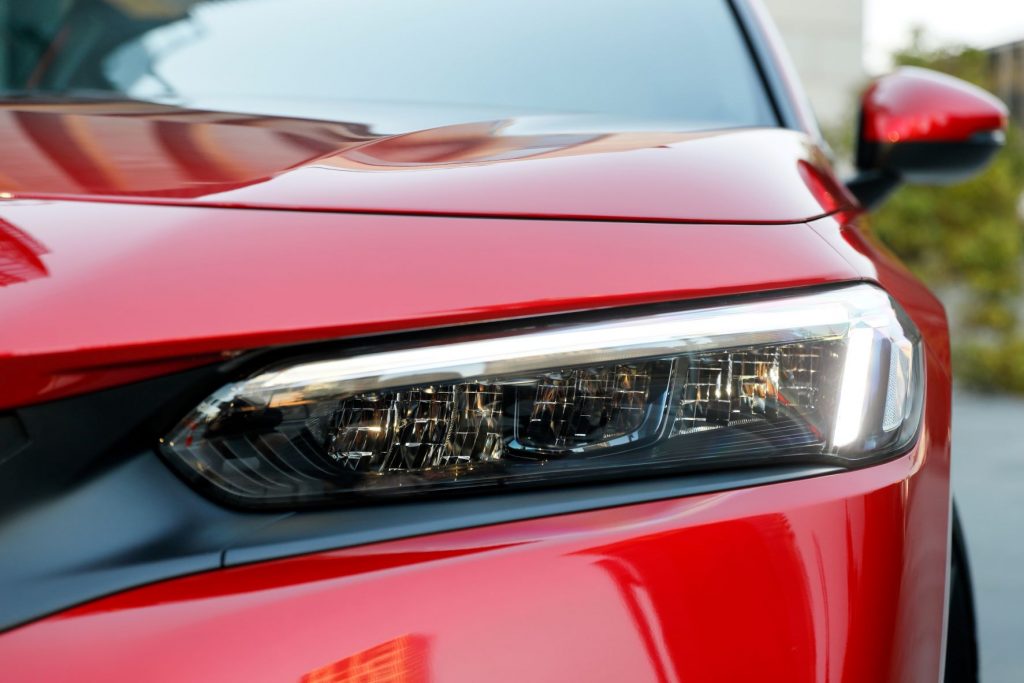Chris Riley tests the 2022 Honda Civic VTi-LX with pricing, specs, ride and handling, safety, verdict and everything the over-50 driver needs to know.
Summary: The latest in a long line of Civics comes with a sharp increase in price, but misses out on a lot of standard features. And Honda’s new policy means you won’t be able to negotiate the price down.
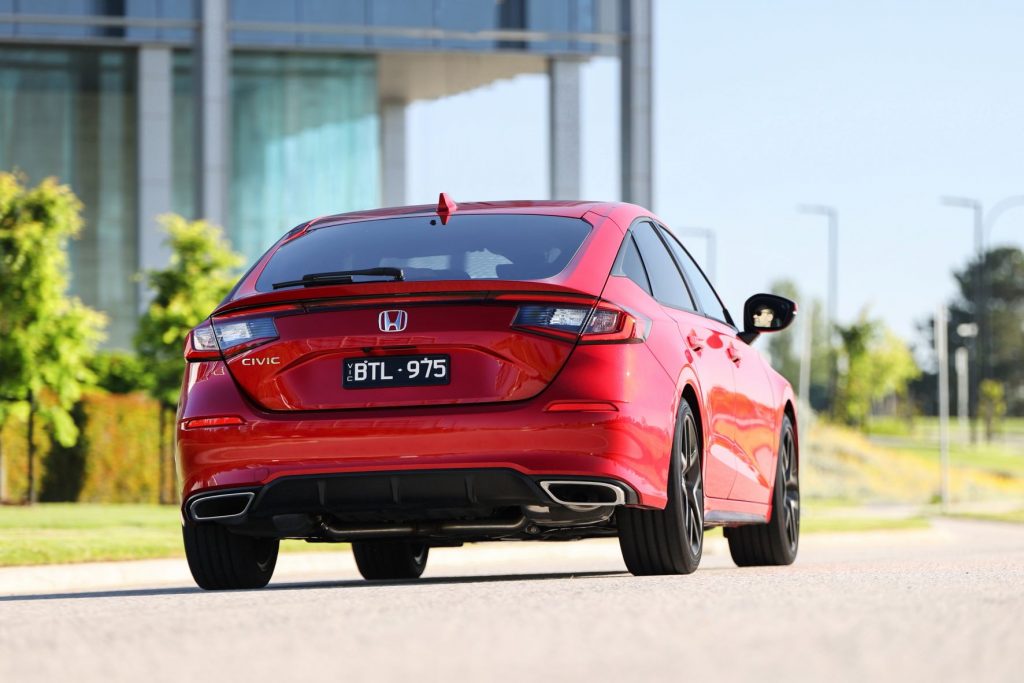
2022 Honda Civic VTi-LX
Pricing: $47,200 (driveaway)
Options: none. All four paint colours available at no additional cost
Warranty: Five-years, unlimited km. Five-years roadside assist.
Safety: not tested
Build location: Japan
Engine: 1.5-litre turbocharged four-cylinder petrol
Power: 131kW @ 6000rpm (134kW on premium unleaded)
Torque: 240Nm @ 1700-4000rpm
Transmission: one speed constantly variable transmission
Body: 4440mm (long); 1910mm (wide); 1596mm (high)
Weight: 2470kg
Towing capacity: 800kg (braked)
Wheels: 19-inch alloy
Tyres: 235/50R19
Ground clearance: 134mm
Turning circle: 12.65m
Fuel tank: 47 litres
Claimed fuel consumption: 6.3L/100km (91 RON unleaded)
Consumption on test: 6.9L/100km (540km)
seniordriver range on test: not tested
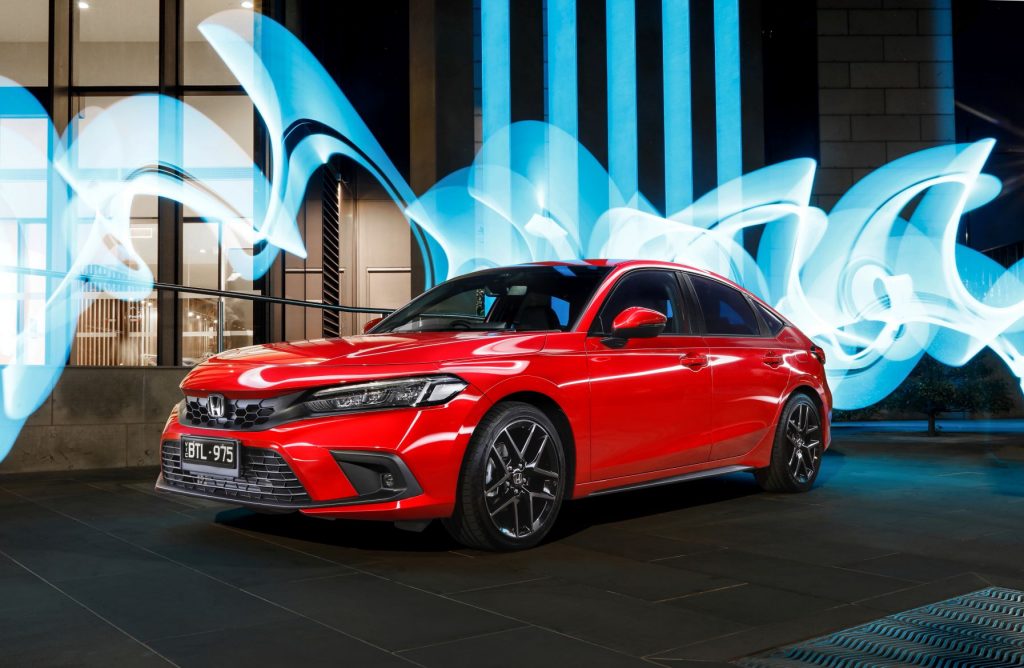
[review]
This is the latest, and Honda would say greatest, in a long, long line of Civics.
It’s a smooth, refined, urbane motor vehicle that’s easy, comfortable and rewarding to drive.
At the same time, I find myself wondering if Honda has done enough to justify the sharp increase in price, with just the one model and no longer a sedan to choose from – arguably the better looking of the pair?
I understand why they’ve culled the line-up, with sales of sedans and hatches in decline across the new car market.
Nissan springs to mind and just a couple of weeks ago Ford announced it was cutting Focus ST, Focus ST X and Fiesta ST models – until now icons for the brand.
It’s been 50 years since the first Civic landed in Australia, but like the Falcon and Commodore, unless the public responds positively it could well be the last Civic we ever see.
Honda says the arrival of the all-new, 11th-generation Civic is the first step in a three-phase rollout for its iconic small car in Australia.
A hybrid is set to join the line-up later in the year followed by the much anticipated, high-performance Type R version – which is sure to be a cracker.
What’s it cost?
Prices for Civic start and finish at a fixed, driveaway $47,200 across this great land of ours.
There will be no negotiation, aiming to make purchase a less daunting, haggle-free process.
To put the new car in perspective, the previous VTi-LX was priced from $35,590 plus on-roads.
What do you get for the extra $11,000 or so?
Well, it looks discernibly different, at least from the rear and it’s lost those huge, Volvo-esque, some might say ugly, tail lights (wonder if this is the start of something new).
On the flip side, Civic doesn’t stand out from the crowd in quite the same way.
If anything, the styling is more mainstream.
The body is also stiffer with a wider track and longer wheelbase which means better ride and handling.
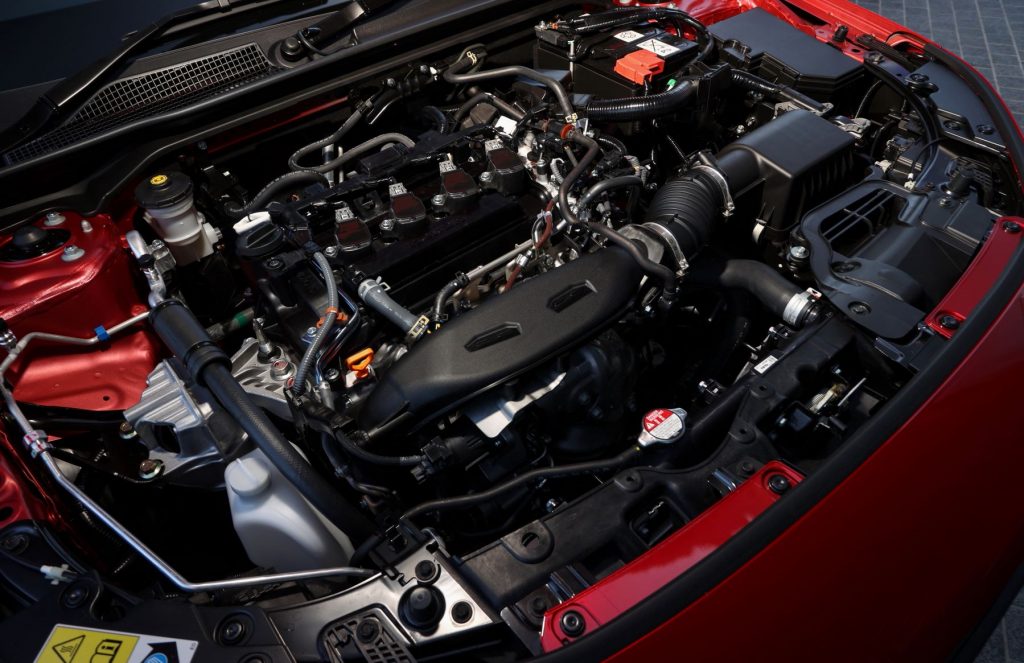
The 1.5-litre turbocharged petrol engine produces fractionally more power and torque, while the CVT transmission has apparently been updated, with the addition of sport mode.
Inside, there’s a couple of extra airbags, a larger 9.0-inch touchscreen, new navigation system, DAB+ digital radio, wireless phone charging, premium Bose audio with support for wireless CarPlay – and an instrument panel that is at least partially digital.
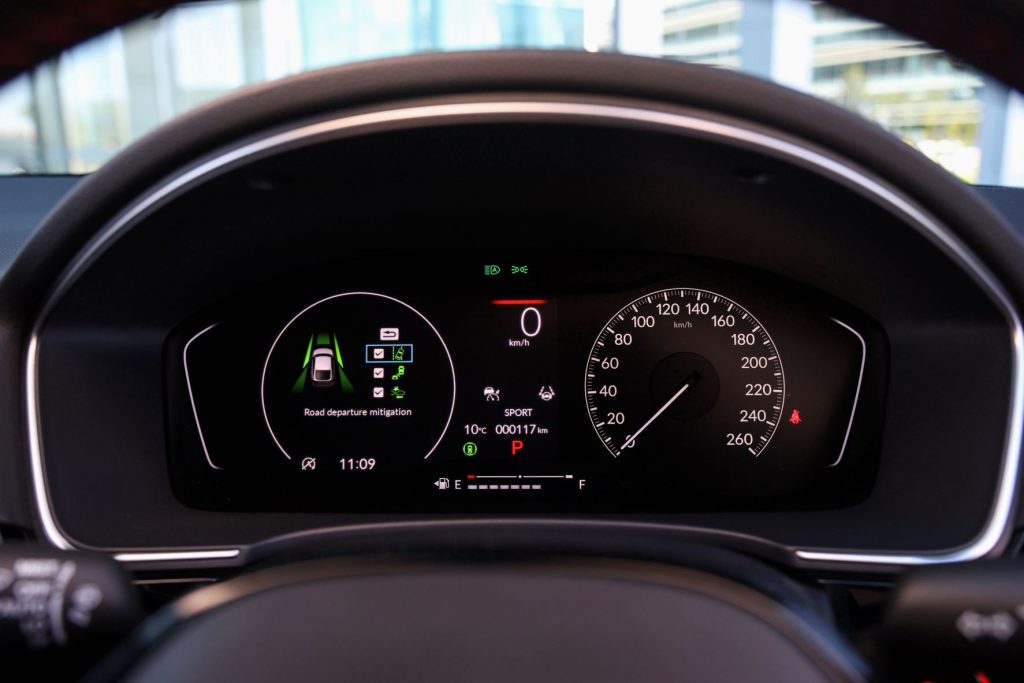
Vale LaneWatch, the clever gutter-side, rear-view camera system that has been a feature of Hondas for so long.
It’s gone but not forgotten, replaced by a proper blind spot alert system.
That’s the gist of it.
But wait… it’s supposed to be fully equipped?
What about a sunroof? I hear you ask. What about Head-up display? What about Speed sign recognition and camera warnings? And what about a fully digital dash that can display navigation and that can be configured to show different views?
What’s it go like?
My wife remains unimpressed, but I reckon the new Civic is a sweet thing.
The cabin has a more premium feel, compared to the hard plastics of the previous model, with two-zone climate air and artificial leather and suede upholstery that’s accented with red stitching – along with heated and power adjustable front pews.
The touchscreen has been moved to the top of the dash as is the current vogue, with a hand rest to steady your fingers as they attempt to absorb bumps in the road.
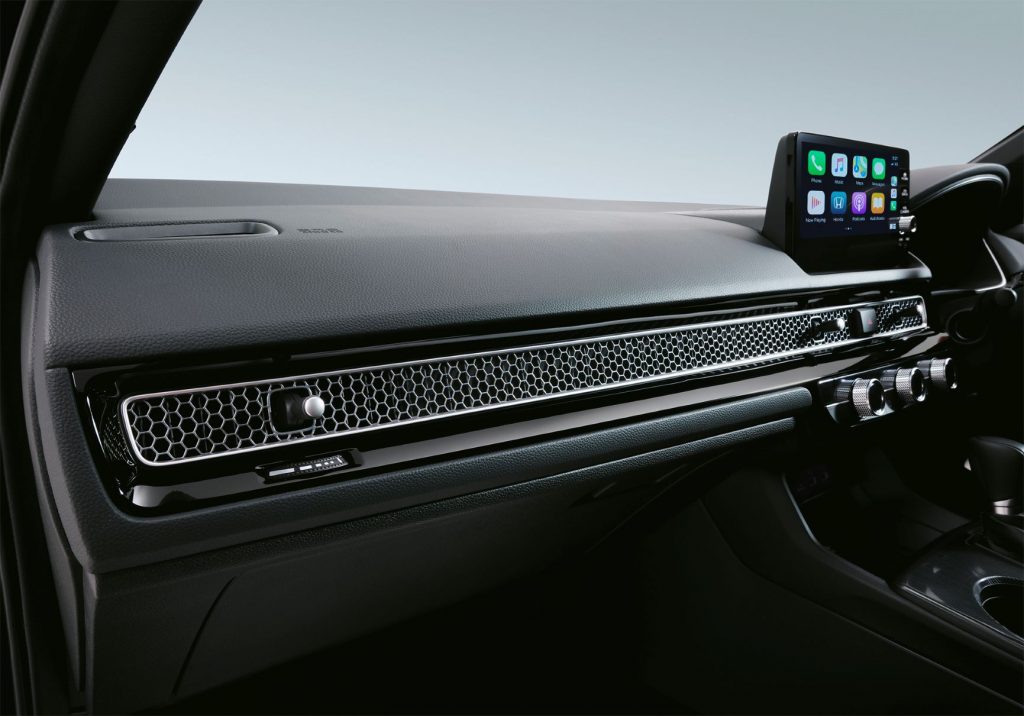
A long thin honeycomb grille that hides the air vents is an inspired touch and it is good to see the addition of rear air vents for back seat passengers.
The dash is half-baked, with two traditional looking round analogue dials, the right one a standard analogue speedo while the left one acts a tacho with digital driver information display in the centre.
It will show navigation prompts, but that’s about the extent of it.
The 1.5-litre turbocharged petrol four-cylinder engine has been tweaked to produce 131kW of power at 6000 revs and 240Nm of torque from 1700-4000 revs – an increase of 4kW and 20Nm (the latter figure is significant).
It will happily run on standard 91 unleaded, but if you stick premium in, you get another 3kW (premium is better for the engine too).
The dash from 0-100km/h takes a middle-of-the-road 7.5 seconds.
Fuel consumption from a smallish 47-litre tank is a claimed 6.3L/100km (the same as before).
We were getting 6.9L/100km after 540km of mixed driving.
By far and away the best aspect of new Civic is the comfort and quality of the ride.
The previous model was good; this one is outstanding.
Rear legroom is good, but the plunging roofline makes access difficult – watch your head.
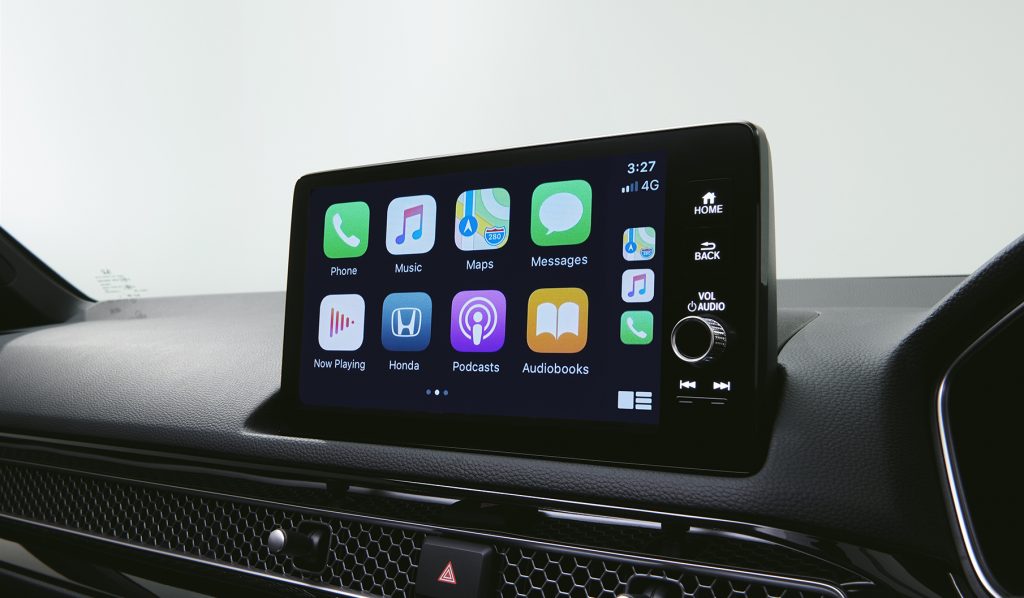
The all-new high-definition 9.0-inch colour touchscreen, infotainment and audio system features built-in, off-line satellite navigation, DAB+ digital radio, Qi-compatible fast wireless charging, together with wired Android Auto and wireless Apple CarPlay.
Sound comes from a Bose 12-speaker audio system, featuring Bose Centrepoint 2 and Bose Surround Stage digital signal processing, putting the listener in the centre of the sound no matter where they are seated.
It also includes four 2.5A USB ports, with two in the front and two at the rear of the centre console.
There’s a physical volume knob plus physical buttons for Home and Back functions, with large easy-to-recognise icons, a fast processor for better response time and simplified navigation structure with fewer embedded menus.
While it’s good to see satnav included, it does not have speed sign recognition, nor any speed camera or school zone warnings.
As well as Sport and Economy modes, gear change paddles are provided to move through the CVT’s seven “steps” manually.
But you can’t change gears using the transmission lever.
The broad spread of torque, available from 1700 to 4000 revs, provides effortless performance, while the CVT is remarkably smooth and un-CVT like.
Good one Honda!
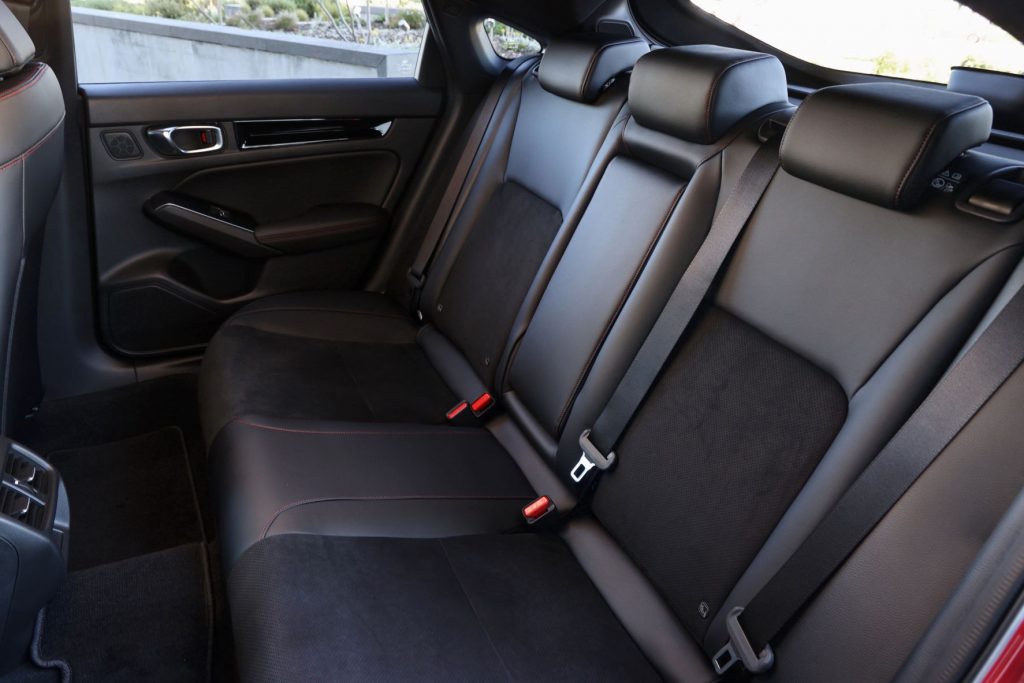
New Civic is yet to be crash tested by ANCAP (previous model is still waiting too).
It adds knee airbags for driver and front passenger, bringing the total to eight, plus improved pedestrian protection and an all-new wide-view, single-camera Honda Sensing system.
There’s also new Traffic Jam Assist, updated Adaptive Cruise Control (ACC) and Lane Keep Assist System (LKAS), as well as Blind spot information system & Rear Cross Traffic Alert (RCTA).
Civic is covered by a five-year, unlimited-kilometre warranty, with five years of roadside assistance and map updates.
The service cycle is a relatively short 10,000/12 months, with the first five services capped at $125 each.
What we like
- Comfort
- Ride quality
- Rear air vents
- Punchy performance
- Auto high beam
- Quality rear camera
- Doesn’t use much fuel
What we don’t like
- Pricey
- Tyre repair kit
- No speed sign recognition
- No speed or school zone warnings
- Low rear roofline makes entry and exit difficult
- Instrumentation trails competitors
What over-50s need to know
I like it. The stumbling block is the price.
Civic is being promoted as one, fully-equipped model.
While it excels at the basics, it falls short of competitors when it comes to the bells and whistles.
Where’s the sunroof, seat cooling, head-up display, not to mention the 10.2-inch digital instrument cluster that the car is offered with overseas?
For the price I’d expect more. And so should you.
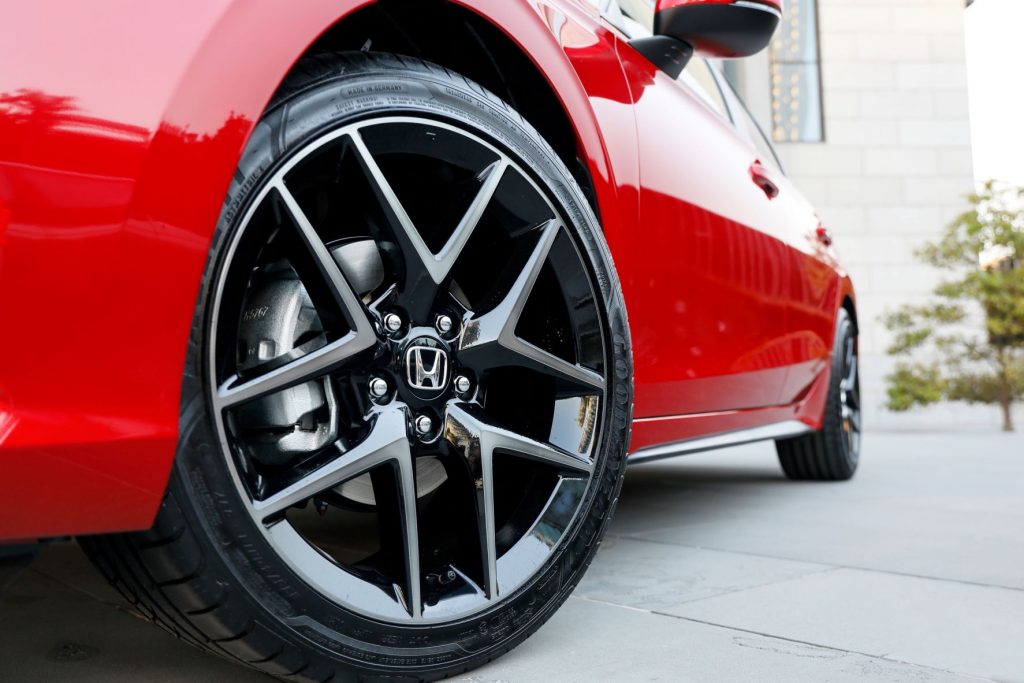
As a car for older drivers, Civic sits a little low and is a little difficult to get in and out of, although once you’re in it’s a very comfortable car.
At the same time, if you’ve got the money to buy it and don’t mind spending it, you will find Civic a rewarding car to own and drive, maybe even a bit glamorous as we don’t expect to see a lot of these on the road.
seniordriver comments
We’re always intrigued when a manufacturer decides to hike a price because it always changes the buying dynamics.
Now that Honda has pushed the price of the Honda Civic to $47,200, it suddenly finds itself competing in a slightly different marketplace. Whether it will succeed or not remains to be seen, but facing off against the Audi A3 ($49,600 plus on road costs for the 1.5-litre 35TFSI), Volkswagen Golf ($39,990 plus on road costs for the 1.4-litre 110TFSI R-Line) and even the usually-overlooked Škoda Scala ($40,390 plus on road costs for the 1.5 Signature) will be a challenge.
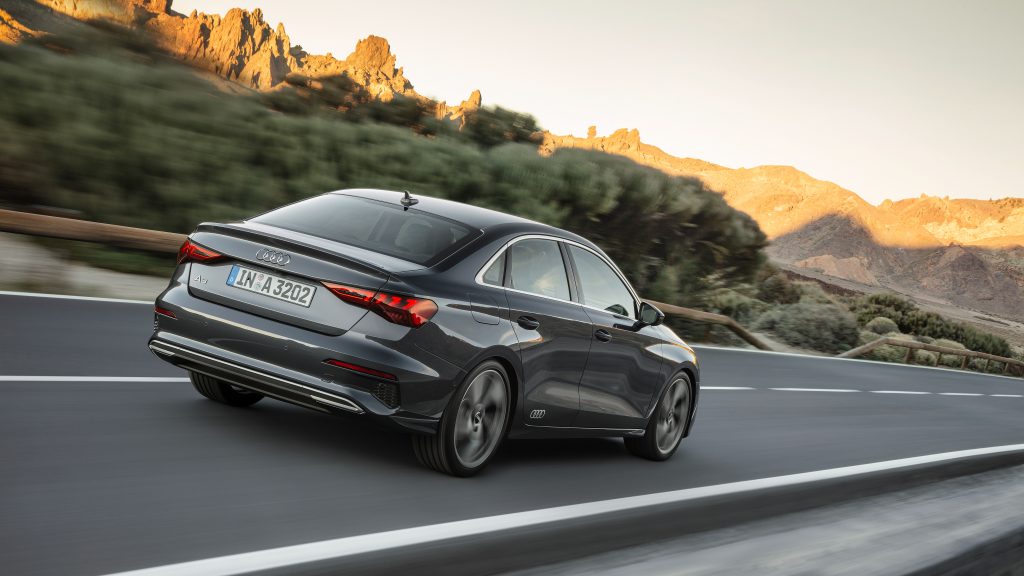
Admittedly, the Audi and VW put out less power (110kW compared to the Civic’s more robust 131, but most owners won’t notice or care, especially since they both manage more torque at 250Nm, even after the Civic’s output has been raised by 20Nm). They’re both marginally smaller as well, but in the real world, not enough to make a difference.
Add in such other strong (and less expensive) competitors as the Toyota Corolla, Hyundai i30, Mazda3 and even the Lexus CT200h ($41,750 plus on roads) and the Honda may struggle to woo buyers. There’s plenty of choice in this class, and some real value buys.
Most of them offer a sedan option as well, unlike the Civic that is only available as a hatch.
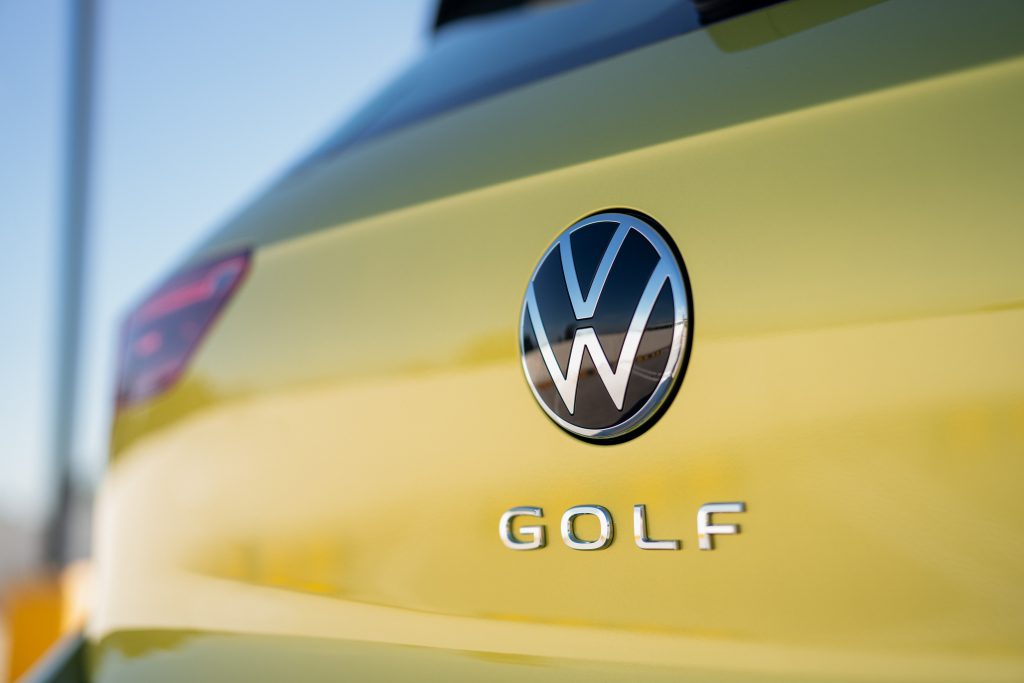
We were always fans of Honda’s innovative LaneWatch, and after a few days in a Honda, it was usual to miss the left-side camera view when indicating left once we stepped into another brand. Even Hyundai has adopted something similar with a camera view replacing the left gauge (when indicating left) and replacing the right-hand gauge when indicating right.
Missing features are really unacceptable at this price point (head up display, speed sign recognition, camera warnings, school zone warnings) and they are not even available as options. Speaking for ourselves, we can take or leave the sunroof, but some buyers will be disappointed that they can’t specify one.
Touchscreens in cars are still a problem… a moving car makes it difficult to be accurate with your fingers, and we think they are a major distraction anyway.
We fail to understand why the Civic still hasn’t been safety rated by ANCAP. And we can’t understand why the Civic is saddled with an unreasonably large turning circle (12.65m) and a miserly braked towing capacity of just 800kg.
All in all, we’ll watch developments with interest.
